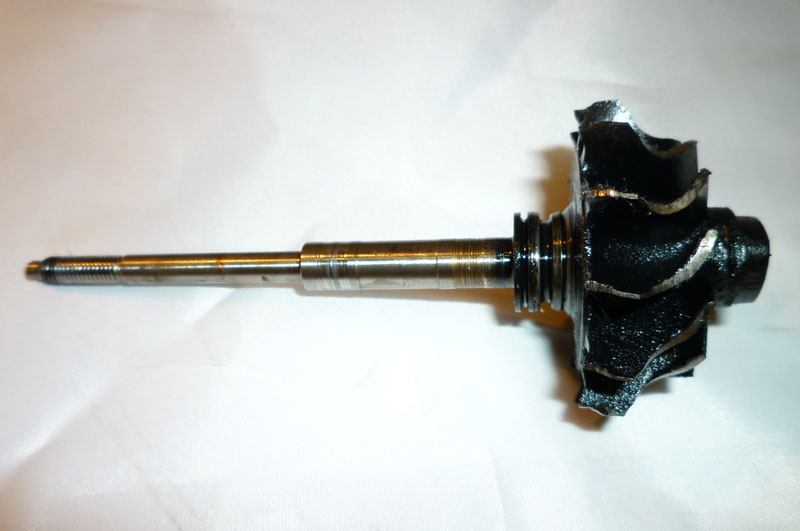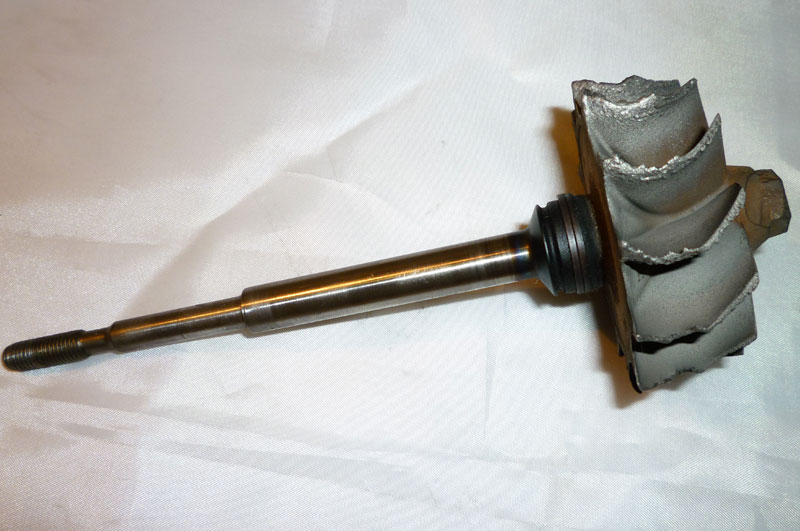In this image, you can see some moderate corrosion to the piston ring seal area of the turbine shaft – the surface of the metal has become worn, pitted and roughened.
This kind of damage is caused by moisture (and salt) in the atmosphere, which gets into the turbo, and begins to eat away at the metal. Whilst generally, this means that it’s more commonly found in turbos used for marine applications, it can also be found on industrial turbochargers, and those used on farming equipment that is kept outside.
Surface corrosion damage only gets worse over time, affecting both the efficiency and output of the turbo. In addition, if you find corrosion damage on the piston ring seal area, that could mean that there is more corrosion damage elsewhere on the turbo, like on the bearing housing, compressor and seal plate.
If caught early enough, it’s sometimes possible to repair corrosion damage like this, but in many cases, it’s best to replace the affected components.



